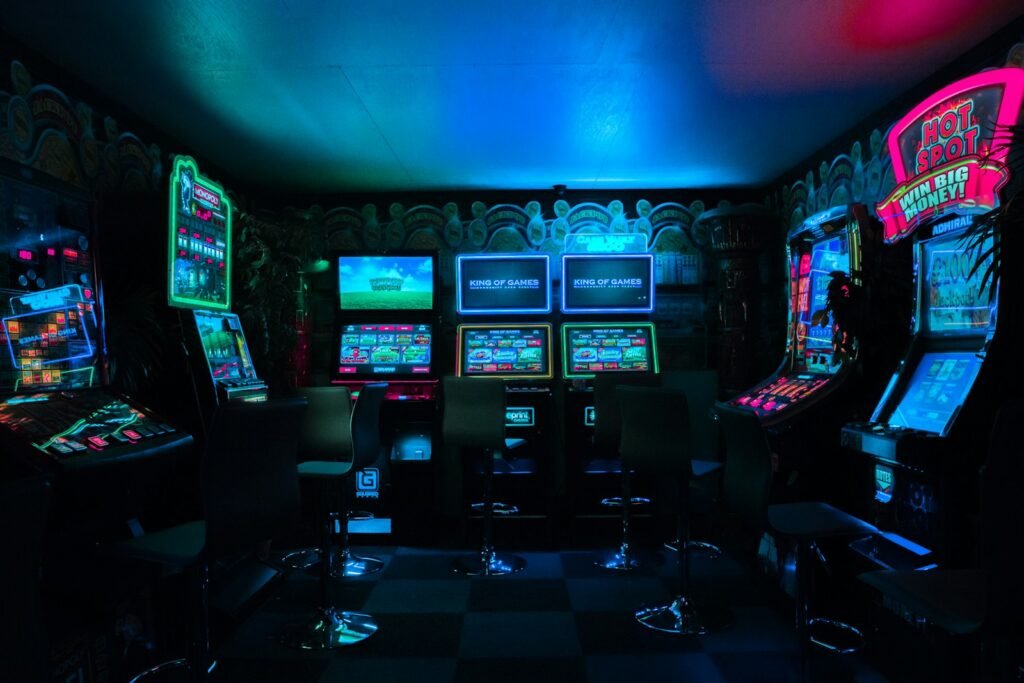The gaming industry has always been at the forefront of technological innovation, from photorealistic graphics to immersive virtual worlds. Now, a new revolution is underway, one that promises to fundamentally reshape how games are built, played, and owned. At the heart of this transformation lies blockchain technology, which introduces concepts like true digital ownership, decentralized economies, and player-driven governance. While much of the discourse around blockchain gaming tech has focused on speculative trends, it’s the technical underpinnings that truly define its potential. This article explores the intersection of blockchain and gaming from a technical perspective, examining how NFTs in games, smart contracts, and decentralized architectures are creating a new paradigm for interactive entertainment.
Also Read: CEX vs DEX: Which Crypto Exchange Is Right for You?
The Foundation: What Blockchain Brings to Gaming
At its core, blockchain is a distributed ledger technology that enables secure, transparent, and immutable record-keeping. In gaming, this translates to several groundbreaking capabilities. First, it allows for verifiable ownership of in-game assets through non-fungible tokens (NFTs). Unlike traditional games where items are locked within centralized servers, blockchain-based assets exist on a public ledger, meaning players truly own their digital swords, skins, or characters. Second, blockchain introduces programmable scarcity and provably fair economies via smart contracts. These self-executing agreements ensure that rules around item drops, rewards, and transactions are transparent and tamper-proof. Finally, decentralized infrastructure reduces reliance on single points of failure, potentially enhancing security and longevity for game worlds.
Also Read: Crypto Wallets: Hot vs Cold Storage Comparison
NFTs in Games: Beyond the Hype
When discussing NFTs in games, it’s essential to look beyond the speculative frenzy and understand their technical utility. NFTs are unique cryptographic tokens that represent ownership of a specific asset. In gaming, they can represent anything from cosmetic items and weapons to virtual land and characters. From a technical standpoint, NFTs are built using standards like ERC-721 or ERC-1155 on Ethereum, or similar frameworks on other blockchains. These standards define how tokens are created, transferred, and interacted with. For developers, this means integrating wallet systems, managing gas fees, and ensuring scalability, challenges that require careful architectural planning. For players, NFTs enable interoperability; an item earned in one game could potentially be used in another, provided the games share compatible protocols. This interoperability, while still emerging, lays the groundwork for a connected metaverse where assets and identities traverse multiple virtual worlds.

Smart Contracts: The Backbone of Game Logic
Smart contracts are where much of the magic happens in blockchain gaming tech. These are pieces of code deployed on a blockchain that automatically execute predefined actions when conditions are met. In games, smart contracts can handle everything from loot box mechanics and player-vs-player rewards to governance systems where players vote on game updates. For example, a smart contract could randomize item drops in a provably fair way, with the algorithm visible to all players. Alternatively, it could facilitate player-driven marketplaces where assets are traded without intermediaries. However, designing these contracts requires rigorous attention to security, as vulnerabilities can lead to exploits, a lesson learned from early blockchain games that suffered hacks and imbalances. Tools like formal verification and auditing are becoming essential parts of the development process.
Also Read: How to Buy Ethereum: The Complete Beginner’s Guide
Architectural Considerations: Balancing Decentralization and Performance
One of the biggest technical challenges in blockchain gaming is balancing decentralization with performance. Traditional games rely on centralized servers to deliver low-latency experiences, but blockchain networks can be slower due to consensus mechanisms and network congestion. To address this, many projects adopt hybrid architectures. For instance, gameplay might occur off-chain for speed, while ownership and economy-related functions are handled on-chain. Layer-2 solutions like Polygon or Immutable X are also gaining traction, offering faster transactions and lower fees by processing data off the main blockchain and periodically settling it on-chain. Additionally, developers must consider storage; storing large assets like 3D models directly on-chain is impractical, so most NFTs in games point to metadata stored on decentralized storage networks like IPFS or Arweave.
Real-World Implementations and Challenges
Several games have pioneered the use of blockchain gaming tech, each with unique technical approaches. Games like Axie Infinity combine on-chain asset ownership with off-chain gameplay, using sidechains to reduce costs. Others, like Decentraland, host virtual worlds entirely on decentralized infrastructure, though this comes with trade-offs in graphical fidelity and responsiveness. Common technical challenges include onboarding new users who may be unfamiliar with wallets and gas fees, ensuring scalability during peak demand, and navigating regulatory uncertainty around digital assets. Moreover, the environmental impact of certain blockchains remains a concern, though the shift to proof-of-stake and other energy-efficient consensus mechanisms is mitigating this issue.
Also Read: How to Buy Bitcoin: Step‑by‑Step Tutorial
The Future: Interoperability and Evolving Tech Stacks
Looking ahead, the technical evolution of blockchain gaming will likely focus on interoperability and improved developer tools. Cross-chain protocols could enable assets to move seamlessly between different blockchains, while standards like the Open Metaverse Interoperability Group are working to create common frameworks for virtual worlds. On the infrastructure side, advancements in zero-knowledge proofs and sharding could further enhance scalability and privacy. For developers, platforms like Unity and Unreal Engine are beginning to integrate blockchain SDKs, lowering the barrier to entry. Ultimately, the goal is to create games where players have genuine agency, where their time and creativity are rewarded with ownership and influence.
Conclusion
Blockchain technology is not just a buzzword in gaming; it’s a technical catalyst for change. By enabling true ownership through NFTs in games, automating fairness with smart contracts, and fostering decentralized economies, blockchain gaming tech is pushing the boundaries of what games can be. While challenges around scalability, usability, and regulation remain, the underlying architecture is steadily maturing. For developers, this means embracing new tools and paradigms. For players, it promises a future where gaming is more than entertainment and it’s an ecosystem where participation is valued and ownership is real. As the technology continues to evolve, the line between virtual and tangible assets will blur, creating opportunities we are only beginning to imagine.

